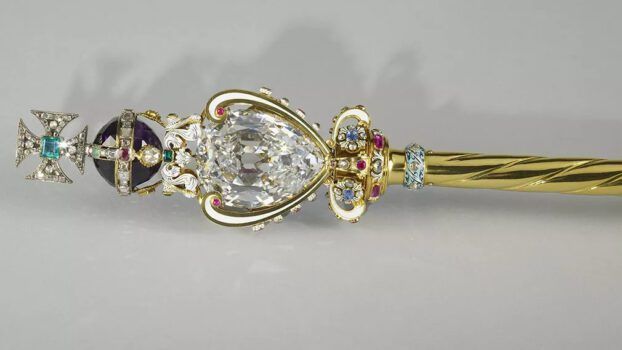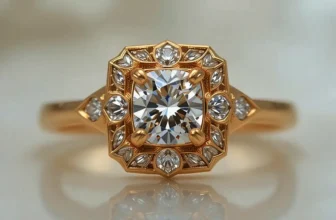The Great Star of Africa: A Jewel of Legends and Royalty
| Invest in Hidden Masterpiece: Rare Antique Oil Paintings For Sale. Limited Originals Available 💰😊 Are you looking for authentic hidden masterpiece? Explore old master antique oil paintings from the Renaissance and Baroque eras. From 16th-century portraits to 18th-century landscapes. Authenticity guaranteed, Old Master antique oil paintings for sale. Shop Now! 🎨 Renaissance And Baroque Art Landscape Antique Paintings Old Master Portrait Paintings |
In the vast tapestry of Earth’s natural wonders, few treasures can rival the allure of the Great Star of Africa, known to the world as the Cullinan Diamond. This gemstone, legendary for its size, brilliance, and historical significance, has captured imaginations for over a century. Its story is a fascinating intersection of geology, history, and royal splendor, a story that begins deep within the ancient rocks of South Africa.
Discovery: Unearthing a Giant
The tale of the Great Star of Africa begins in the early 20th century, during a time when South Africa was experiencing a diamond rush that had already made it one of the most important diamond-producing regions in the world. In 1905, a young mine inspector named Frederick Wells was working at the Premier Diamond Mine, near Pretoria. This mine, operated by the Transvaal-based Premier Diamond Mining Company, was relatively new but already yielding impressive finds.
On January 26, 1905, Wells made a discovery that would change the history of gemology forever. While inspecting one of the mine’s tunnels, he noticed a large, rough stone lying among the gravel. Initially, it seemed like any other diamond, albeit unusually large. Upon closer inspection, its sheer size was immediately apparent: it weighed an astonishing 3,106 carats (621.2 grams). This made it the largest gem-quality rough diamond ever discovered, a title it holds to this day.
The diamond was named after Thomas Cullinan, the mine’s owner, who had built a reputation as one of South Africa’s leading diamond magnates. Cullinan, aware of the stone’s extraordinary significance, arranged for its transport to the capital, Johannesburg, where its potential was further evaluated. At the time, the sheer size of the diamond led experts to believe it might be too large and unwieldy to cut, yet its clarity suggested it could produce some of the most spectacular gemstones ever seen.
From Rough Stone to Royal Jewels
The journey from rough diamond to dazzling jewel was as meticulous as it was delicate. The Cullinan Diamond was sent to London, under tight security, for examination and eventual cutting. Joseph Asscher, head of the famous Asscher Diamond Company in Amsterdam, was entrusted with this immense responsibility. Cutting a diamond of such unprecedented size was considered a monumental challenge, one that could not be undertaken lightly.
In 1908, after months of careful planning, the diamond was cleaved with a single, precise strike, an act that required nerves of steel. The rough diamond was eventually cut into nine major stones and 96 smaller brilliants. Among these, the largest and most famous of all was Cullinan I, also known as the Great Star of Africa, weighing 530.2 carats. Even after cutting, it remained the largest clear-cut diamond in the world. Its cushion shape, perfect clarity, and remarkable brilliance earned it a place in the annals of history.
The other major stones derived from the original Cullinan include Cullinan II through Cullinan IX, each finding its own place in the royal collections or private holdings. Collectively, these diamonds represent one of the most significant and historically important diamond cuts in human history.
Ownership: From Mine to Monarchy
The Great Star of Africa’s journey did not end with its cutting. It was presented as a gift to King Edward VII of the United Kingdom in 1907, by the government of the Transvaal Colony, as a gesture of loyalty and friendship. The gift was symbolic, not just of the wealth of South Africa, but also of the enduring relationship between the colony and the British Crown.
Since its arrival in England, the diamond has been part of the British Crown Jewels, an exclusive collection of regalia held in trust for the monarchy. Specifically, Cullinan I was set into the Sovereign’s Sceptre with Cross, a ceremonial staff used during coronations. It is said that the sceptre, enhanced by the addition of the Cullinan diamond, symbolizes the enduring power and dignity of the monarchy.
The second-largest diamond cut from the original Cullinan, Cullinan II, weighing 317.4 carats, was incorporated into the Imperial State Crown, positioned prominently at the front of the crown. Together, Cullinan I and II stand as twin testaments to the grandeur of one of the most famous diamonds ever discovered.
The Value of the Great Star of Africa
Valuing a gemstone like the Great Star of Africa is not as simple as looking at carat weight. Its worth is a combination of size, clarity, historical significance, and cultural symbolism. Modern estimates place its value at several hundred million U.S. dollars. While exact figures are speculative (the British Crown Jewels are considered priceless and are not insured in a conventional sense), experts agree that Cullinan I alone could easily surpass $400 million, if ever sold in today’s market.
The value is amplified not just by its physical properties but by its provenance. Few diamonds in the world can claim a history entwined with royalty, a place in iconic regalia, and the distinction of being the largest clear-cut gem on Earth. In essence, its historical and symbolic significance elevates it far beyond any ordinary gemstone.
The Legacy of the Cullinan Diamonds
The Great Star of Africa is more than a jewel; it is a symbol of ambition, craftsmanship, and history. Its story intertwines with the British monarchy, the diamond industry, and the history of South Africa. Beyond Cullinan I and II, the other stones cut from the original rough diamond have been distributed among various royal collections. Some have been incorporated into private pieces, while others remain part of ceremonial regalia, adding to the mystique and legacy of the Cullinan diamond.
Interestingly, Cullinan diamonds have also inspired fascination in popular culture. They are referenced in literature, films, and even high-profile exhibitions, drawing crowds eager to glimpse these rare treasures. The story of the diamond, from its discovery deep underground to its prominent display in coronation regalia, continues to captivate and inspire.
The Great Star of Africa Today
Today, the Great Star of Africa remains housed in London, as part of the British Crown Jewels, under the guardianship of the Tower of London. Visitors from across the world flock to the Tower to view these jewels, though only select items are displayed at any given time. Cullinan I, embedded in the Sovereign’s Sceptre, is a highlight, a brilliant gem that continues to shine as a symbol of continuity and heritage.
The diamond is not just an exhibit; it is a functional part of the British monarchy’s ceremonial traditions. Every coronation since its presentation has featured the Cullinan diamond in some form, ensuring that its legacy is continually renewed with each generation of royalty.
The Science and Art Behind Its Brilliance
The Cullinan diamond is celebrated not only for its size but also for its extraordinary clarity and brilliance. Diamonds are graded on the Four Cs: Carat, Cut, Clarity, and Color. The Great Star of Africa excels in all categories. Its color is described as D-color, which is the highest grade of colorlessness, and its clarity is near perfect. The cushion cut used by Asscher allowed maximum brilliance and sparkle, transforming the rough, 3,106-carat stone into a jewel that captivates the eye.
The cutting process itself is a marvel of human ingenuity. When Joseph Asscher first studied the diamond, he created a wax model of the rough stone to plan each cut carefully. One slip could have destroyed the world’s largest diamond. Legend has it that during the cleaving of the stone, Asscher fainted from the tension of the moment. Thankfully, the strike was precise, and the diamond was successfully divided into its major components.
Lessons from the Great Star of Africa
The story of the Great Star of Africa teaches us about patience, precision, and foresight. From the geological forces that formed it millions of years ago to the hands of miners, cutters, and royal custodians, every step in its journey required extraordinary care. It reminds us that beauty often comes at the intersection of nature and human effort.
Moreover, it serves as a symbol of human fascination with rarity and brilliance. Diamonds have long represented wealth, status, and power, but the Cullinan diamonds amplify that symbolism. They are reminders of historical events, of colonial dynamics, of craftsmanship, and of the enduring allure of natural wonders.
Great Star of Africa: A Legacy Set in Stone
Over a century has passed since Frederick Wells discovered the great rough stone in a South African mine. Yet, the Great Star of Africa continues to shine, literally and figuratively. From the depths of the Earth to the ceremonial halls of the British monarchy, its journey is a testament to the marvels of nature and the heights of human achievement.
The diamond’s story is not just about wealth or royalty; it is a chronicle of history, artistry, and the enduring human desire to celebrate what is rare and beautiful. Today, anyone who gazes upon the Cullinan I embedded in the Sovereign’s Sceptre can glimpse not only a sparkling gem but also a saga of discovery, devotion, and destiny.
In the annals of gemology, few treasures compare. The Great Star of Africa is not merely a diamond, it is a legend crystallized in stone, shining with the brilliance of a thousand stories, and promising to capture imaginations for centuries to come. image / rct





